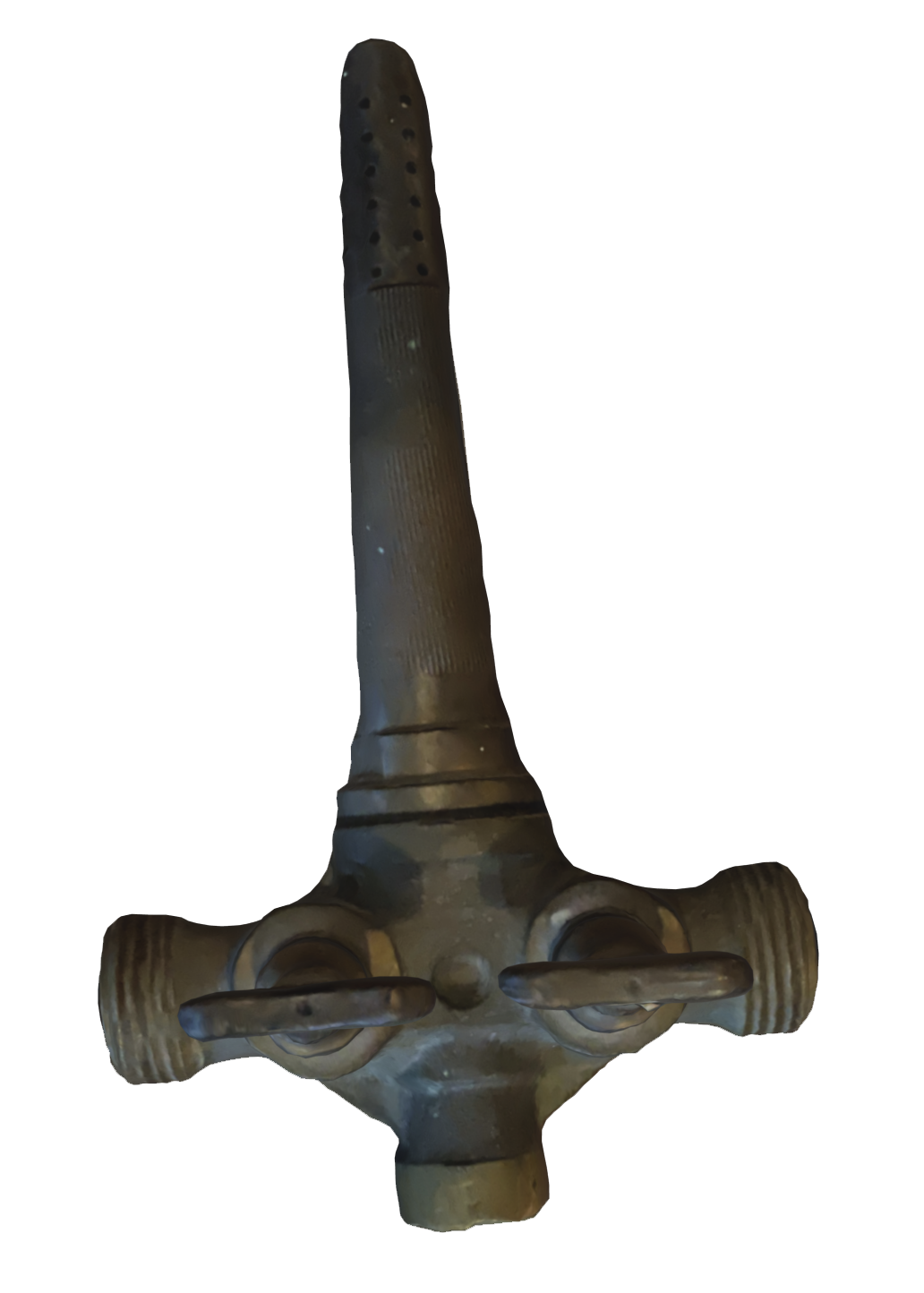Paul Schulte
This is an unknown gas appliance. It's a found object.
It's not a ritual object.
It has a utilitarian engineering purpose now long lost. When we moved into this house about 30 years ago, it was one of the things we found in the cellar, and I thought it was interesting. Because it was, it could look ritual.
It could look religious, it could look heraldic. I like it because it says something about the past and a particular period of the past which was the switch over from gas to electricity. It spoke to me of that period when people used gas appliances, it had a connection with my family.
My family had never liked gas or never been allowed to like gas. Because my father had been an engineering officer on an aircraft carrier during the war and he was terrified of gas because if you are in a ship carrying millions of liters of aviation fuel, what you are particularly afraid of is leakage of fuel vapour and fire; indeed it looked like the sister ship to his ship had been destroyed without enemy action. In the middle of the Atlantic, it just blew up and my father had made some modifications on his ship so that didn't happen. So my father's anxiety about gas and his sheer distaste for it, not just the smell but the danger of it, was an issue in what we could do to heat ourselves. So when I found this in the cellar, it was a sort of prehistoric era artifact. It was from a period before full electrification, which was growing up, in my case in the 50s and 60s. This was modernity and the gas heating was Victorian, or at least pre-Second World War, and we didn’t want anything to do with it. So gas for me was the past and then finding this in the past was like recovering and then recuperating a Neolithic object. I thought it was too interesting to be lost or allowed to remain in the near permanent darkness of the cellar. So I have brought it up from the collective historical unconscious, and it is preserved on my desk or my wife's desk. All being proudly displayed again to the public view to the select visitors and filmic representations. So enjoy everyone.
